I’m fascinated by iceberg videos, even for stuff that I don’t know much about, because I’m the kind of person that’s into fun facts. I especially like to see stuff that would be considered obscure even by people that are into that specific thing. If you’ve somehow never heard of icebergs, icebergs are a type of chart that categorizes information on a subject; the surface level of the iceberg is stuff that’s common knowledge, while deeper levels include things that are obscure to even experts on that subject.

A while ago,, I saw this iceberg, made by TungerManU on RPGMaker.net, that’s about visible RPG Maker games. And I thought, hey, this would be cool for content one day, especially since the most read stuff on Indie Hell Zone are my RPG and visual novel content, apparently. While I’m fundamentally a coward when it comes to talking, I think that this would still make for a fun read.
But also, I admire people that make iceberg videos, both because of their ability to just Talk and also I can understand that the scripts for these videos must be fucking huge. Consuming a long video is more palatable than reading a long article, so I plan to split this in half. Maybe one day I’ll find the Power to make a real video essay. One can dream…
1st Layer

As expected from icebergs, anything at the top layer is stuff that’s readily known, even to people outside of the specific subject. In the case of RPG Maker games, games that are ranked here are the few ones that became mainstream successes.
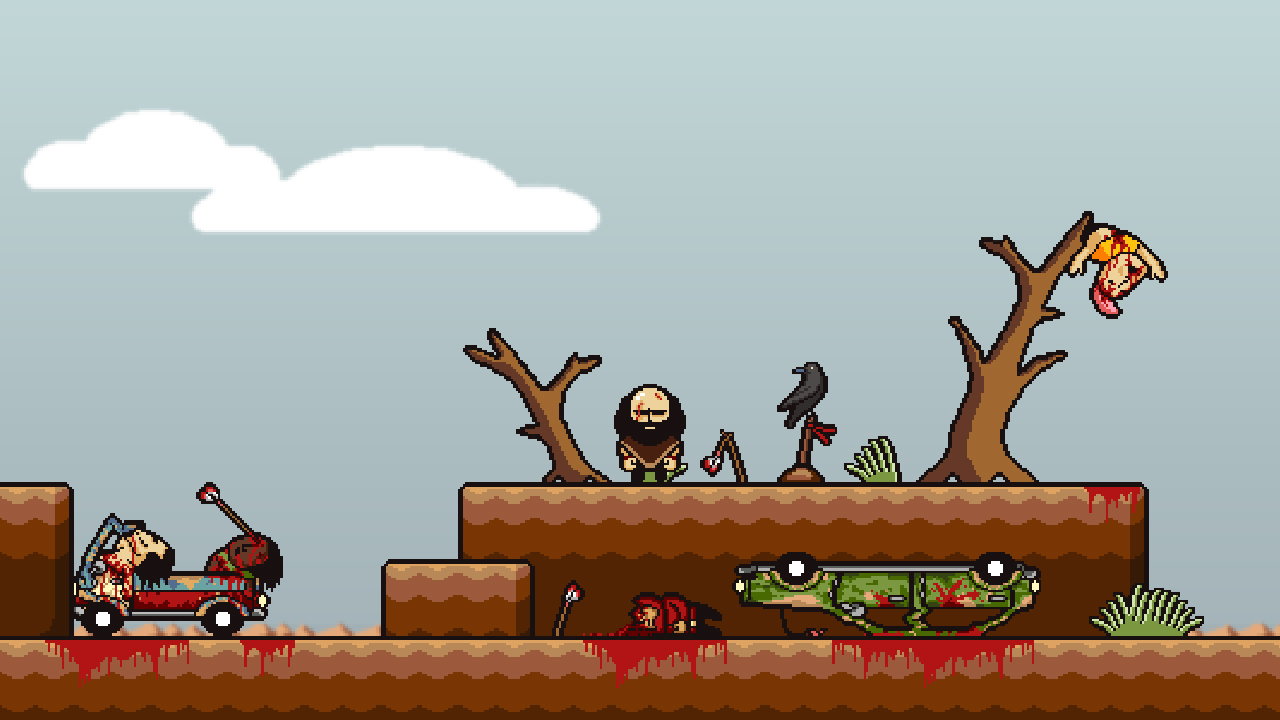
LISA, by Dingaling, is actually a bit of an interesting case. This presumably refers to LISA: The Painful RPG, one of the few successful RPG Maker games that is actually an RPG. What makes it a bit of a weird case is that while The Painful RPG is widely known, fewer people know that it’s actually a sequel. The original game, since redubbed as LISA: The First, is essentially a Yume Nikki-esque fangame about an abused girl – more on Yume Nikki later.
As for The Painful RPG, you play as Brad Armstrong, Lisa’s older brother, in a post-apocalyptic world without women. In a normal adventure filled with turn-based combat, lots of party building and moral choices, Brad goes on a destructive and self-destructive quest across the wastelands of Olathe with a gang of dipshits to save his adopted daughter. As for said adopted daughter, Buddy, she’d go on to be the player character of the DLC sequel, LISA: The Joyful. The Joyful actually came about because it was a Kickstarter backer tier. Yeah, nobody really acknowledges that this was a Kickstarter game.
LISA has also inspired a bunch of fanworks. The most notable of these are The Pointless and The Hopeful, which are actually games I’ve played for this site. Altogether, the LISA series is one of the two main elements of the inexplicable “Earthbound inspired RPG about depression” stereotype, even though the creator hates JRPGs.

So, speaking of the “Earthbound inspired RPG about depression” stereotype and Kickstarter games, we must talk about OMORI. OMORI is a game that was, at the time, infamous for being a Kickstarter game directed by internet artist OMOCAT that people thought to have fell through… until the surprise release on Christmas of 2020. Since then, it’s become a successful game that’s arguably a defining game of this generation of RPG Maker.
Before it existed as a game, OMORI existed as an in-character blog by a character named Omoriboy, who was a much edgier older version of the character we know now. While the original blog is gone, somebody has it saved on Wattpad. There’s also OMORI’S STORY, which I suppose is a prequel comic whose vision is closer to the version seen in the proper game.
In OMORI, you play as Omori, a boy that lives in a weird dream land… except not really, because in real life, he is a depressed shut-in named Sunny. Switching between Omori and Sunny, OMORI provides a strong story about grief and guilt that shows a love for both the standard RPG genre and the adventure games made in RPG Maker.
And speaking of adventure games, the rest of the games up here are adventure games. There are plenty of people that just choose to ignore the RPG aspects of RPG Maker entirely to just make nice adventure games, since it does a good job at that aspect.
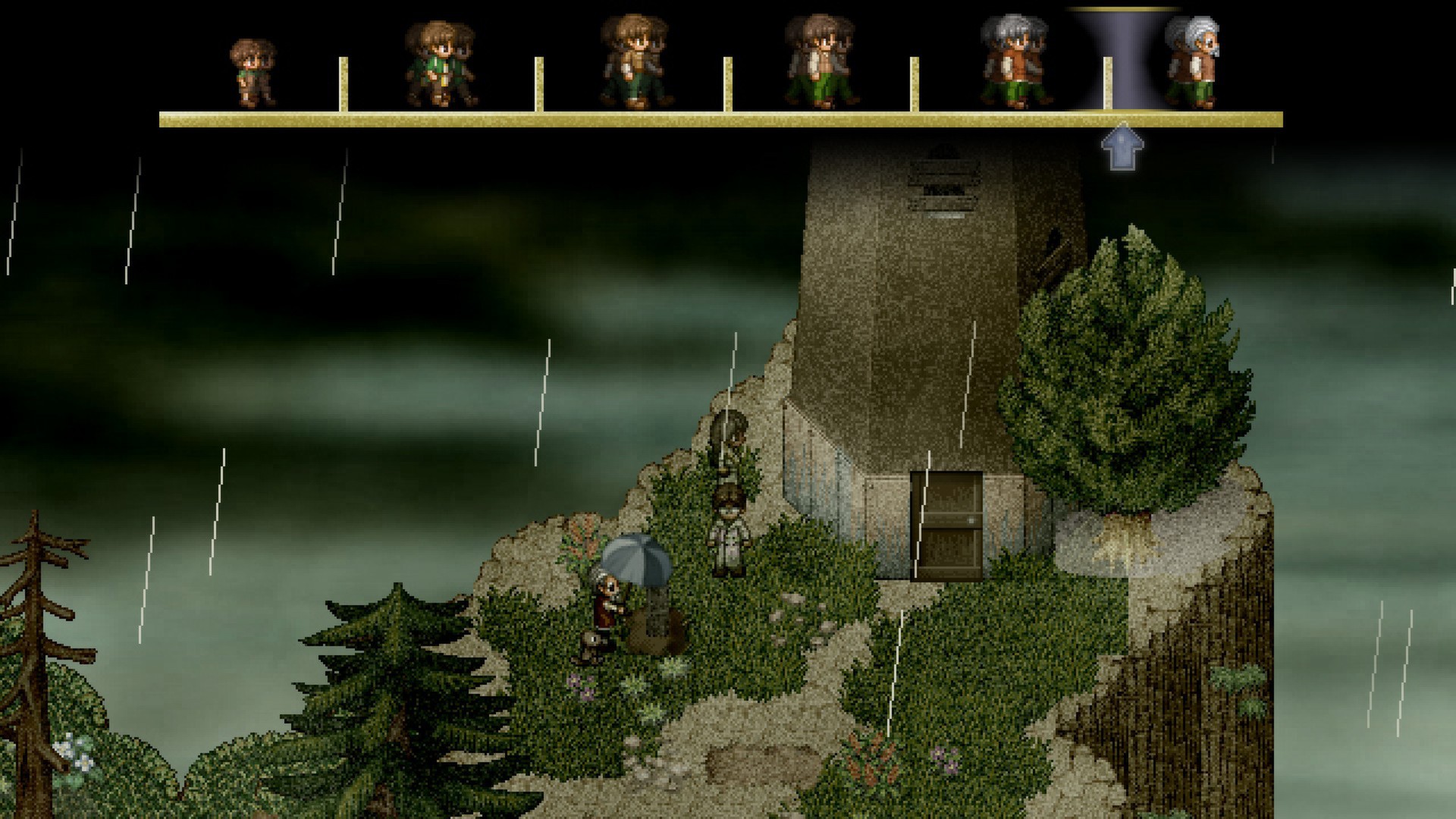
One of these is Freebird Games’ To the Moon, originally released in 2011. You play as Dr. Rosalene and Dr. Watts, two employees of the Sigmund Corporation, which has developed the technology for people to jump into memories and manipulate them. In this case, Rosalene and Watts head into the memories of a dying old man to make him believe that he accomplished his dream of going to the moon. In the process, they learn all about his past and why he wants to go to the moon so badly.
It’s a well told story that tells a good tragedy. Well. Watts is kind of a Marvel character, so I kinda hate him, but also, the game really needed comic relief. It’s a true land of contrasts. To the Moon has since been followed up by Finding Paradise (and its prequel, A Bird Story), continuing the adventures of Rosalene and Watts.
A (maybe) spin-off installment, The Impostor Factory, was released earlier this year. Instead of Watts and Rosalene, you play as someone named Quincy, a man who finds himself in a time loop murder mystery that may or may not be connected to the greater franchise.

Then there’s Future Cat’s OneShot, a surreal adventure game. You play as a cat fellow named Niko, who finds themself in a mysterious world with a lightbulb and a quest to fix the dying sun. This is also the only game on this level that I haven’t played, unless you’re counting the original Indie Game Making Contest version. An interesting tidbit though is that the original version of OneShot was disqualified from IGMC because it actually used the unofficial version of RPG Maker 2003 to develop it, but it was such a well-liked game that I presume that Degica decided to help publish it anyway.
(On that note, the actual winners of the 2014 IGMC, Antagonist and Last Word, still got picked up by Degica, to much lesser success, while the creator of 3rd place winner Cope Island self-published to sadly even less success. I played Last Word though and it’s pretty good, don’t sleep on it.)
A notable aspect of OneShot is its fourth-wall breaking nature, with puzzles that interact beyond the game window. It kinda set up for unfair comparisons to Undertale, but in fairness, every RPG/RPG-adjacent game these days gets compared to either Undertale or Persona 5, so it’s fine.
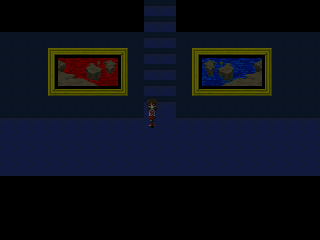
A more specific type of adventure game is the RPG horror, which are horror games made in RPG Maker. Some people think the genre is dead, but the reality is that the big Youtubers that originally played them and helped popularize the genre’s moved on to other things; the PewDiePie of today wouldn’t have played Ib.
And speaking of Ib, while RPG horrors were a viral hit in the mid-2010s, one of the most well-regarded was kouri’s Ib. You play as the titular girl, who gets dragged into a nightmare version of a museum she’s visiting. Joining forces with two other people seemingly trapped in the world, they try to find their way while maintaining the roses that are tied into their lives.
Ib is hardly the first RPG horror game, but it’s an extremely well-made one and can arguably be seen as the face of the genre. Kouri actually announced earlier this year that Ib is getting a remake that will be released in 2022 to celebrate its 10th anniversary. Also, Christ, it really is that old, huh?
Before moving on though, attention should be given to vgperson, who translated Ib. In fact, they translated a bunch of RPG Maker and WolfRPG (an equivalent engine) games, including a few more on this list. I feel that a bunch of stuff would not have taken off if it weren’t for their efforts, so they deserve a shout out here!

Finally, we end things off with Yume Nikki (or Dream Diary), made by Kikiyama. If a surreal exploration game doesn’t list LSD: Dream Emulator as an inspiration, Yume Nikki is just as likely to be an inspiration. In the game, you play as a girl named Madotsuki, who spends her days sleeping and wandering a dream world. With everything abstract, no dialogue, and no meaningful actions taken in the waking world until the end of the game, Yume Nikki is a game that’s subject to interpretation.
There is barely any gameplay in Yume Nikki beyond exploring her world. The main goal is to collect scattered objects called Effects that lets her change her form, some of which has some limited interactivity with the world around her. Despite the engine’s limitations, Yume Nikki is rather successful at creating an atmospheric experience.
The game released in small version updates, with the last one being version 0.10, released in 2007. There has actually been a media preservation effort to look for the past versions of the game. The oldest version found has been 0.04, with the latest find (0.07) being found just back in August. Honestly, if you’re into this stuff, like me, check out The Cutting Room Floor.
Yume Nikki’s footprint can be seen in a lot of things, including the aforementioned LISA series and OMORI. It also spawned a vibrant fangame community that’s actually still pretty active today, given that its base experience is easy to copy and iterate on. Out of these, the most notable ones that people point to is the collaborative Yume 2kki and lolrust’s .flow. Yume Nikki also had a reimagining made under Kadokawa which… is significantly less well-liked.
2nd Layer

These games are well-known, though they aren’t exactly mainstream successes or widely influential as the ones above.

Ao Oni is a super basic RPG horror where you play as a guy trapped in a mansion with a big blue monster (aka the Oni). Now, I played it and I think it’s kinda weak, especially in regards to story, but I think this is because it’s one of the earliest RPG horror games, seeing that it released in 2007. It feels like one of those things that was considered the shit when it was first released but is weak compared to future contemporaries.
Personally, I think that this should be higher, since it had a pretty good Youtube presence, along with some fangames. It also had multiple adaptations in… pretty much everything. It had light novels, it had a manga, it had an anime and it even had two live-action films.

In fact, speaking of contemporaries, Fummy’s The Witch’s House is a good example of one of those. A young girl named Viola is trapped in a mansion by a murderous witch. The base premise of the game seems similar, but The Witch’s House expands on it with a greater variety of threats and puzzles, all tied together with a story that leads into a shocking twist.
While originally developed in RPG Maker VX Ace as freeware, the game got an updated commercial version made in RPG Maker MV in 2018. The game also has a prequel novel, The Diary of Ellen, which also had a manga adaptation in 2017.

Similarly, there’s Dreaming Mary, by accha and Tras. It’s inspired by various pieces of horror media or things with horror elements in them… which immediately makes the game’s cutesy demeanor suspect. You play as Mary, who likes to spend all day dreaming – though, unlike the likes of Yume Nikki, there’s a pretty explicit narrative lying underneath it all.
A thing I find notable about the game is that it’s an exercise in minimalism, in that it was made in the Lite version of RPG Maker VX Ace, which gives you all the tools you need but heavily restricts the amount of content the game can have. There was going to be a sequel called Blue Dreams, but the developer blog stopped updating in 2017. And really, what better way to represent the spirit of RPG Maker besides a game that won’t finish?

On a lighter note, there’s Mason Lindroth’s Hylics, the basic JRPG told through the lens of a bizarre claymation world. You play as Wayne, a guy with a waning moon for a head, on an inexplicable quest to fight the gibbous moon Gibby. Structurally, it’s a basic old JRPG. In practice, it’s really weird.
The art style is easily Hylics‘ strongest aspect, with the sprites and environments being scanned images of claymation figures, which is Lindroth’s signature art style. The battle animations are an intricate, goofy delight in particular. While not made in RPG Maker, Lindroth released Hylics 2 in 2020, taking advantage of the more powerful engine to make the art even cooler.
Outside of the Hylics games, Mason Lindroth has a fairly big body of work, bringing his claymation stylings into different genres.

Keeping on the RPG train, we have ghosthunter’s Grimm’s Hollow, a freeware RPG. Lavender has died and gone to the afterlife, but she’s much more concerned about the fate of her little brother, Timmy. So, she sets out across the afterlife to search for him, reaping ghosts on the way.
While free, you can also purchase the the game’s artbook, which came out earlier this year. It’s a nice show of support for a free game.
…Oh, Kio’s Adventure? I don’t respect Kio’s Adventure. If you’re mad, cope.
3rd Layer

So we’re at the third layer. These are games that you have a decent chance of knowing if you know some of the other games above, but otherwise you may not know them. In the case of some of these games, they can be found on Steam, though they’re more like things you can find casually browsing the platform instead of things that get top billing. Some of them also enjoy some more success outside of our Western view.

Though, I will disagree with the placement of OFF, by Mortis Ghost. OFF was a surreal RPG where you played as The Batter, a warrior dressed like a baseball player, on a quest to purify the world of specters. Simple sprites mix with more intricate drawings with a strong soundtrack by Alias Conrad Coldwood, creating a surprisingly strong atmosphere.
Going along with my belief that this game should at least be ranked at the 2nd tier, OFF also had a healthy fangame culture. The most notable of these is HOME, made by the late Felixthejudge.
It originally released in French in 2008 and received a translation in 2011. However, it did not pop off until 2013, when it had somehow gone viral alongside Danganronpa when the Psycholonials prequel, Homestuck, went on a big hiatus. Why? I don’t fucking know. I actually tried to research this once, and to my surprise, there’s no definitive answer as to how OFF got viral. Mortis Ghost was on the RPG Maker Cola podcast a while ago, giving a bunch of behind the scenes stuff where he was just as confused about the rise of OFF as I was. This was legitimately one of those games that just got lucky. And hey, if anyone was on the MS Paint Adventures forums before it was destroyed, please let me know if OFF was discussed and spread there.

Space Funeral is made by thecatamites, and if you like Cruelty Squad’s design ethos, you may be right at home with this game. You are a perpetually sad man named Philip, and it’s too late for you. The world looks like hell and everyone acts like a weird asshole, but Philip, in spite of all his tears, heads to the City of Forms to fix the world’s corruption at its source with his cool new friend Leg Horse – who is exactly as the name implies. Mechanically, the game is a basic RPG, but stylistically, it’s a beautiful grotesquerie.
The game’s greatest strength – if you aren’t into the untraditional stylings – is the writing. It’s well-showcased with Philip’s MYSTERY ability, which does random things like killing a group of enemy frogs by making them “croak.” Beyond the surface level silliness, there’s intent in the game’s writing in that it’s a musing on Plato’s theory of forms.
thecatamites has a pretty big body of small works outside of RPG Maker that is comparatively underappreciated. I particularly recommend checking out Magic Wand and 10 Beautiful Postcards.
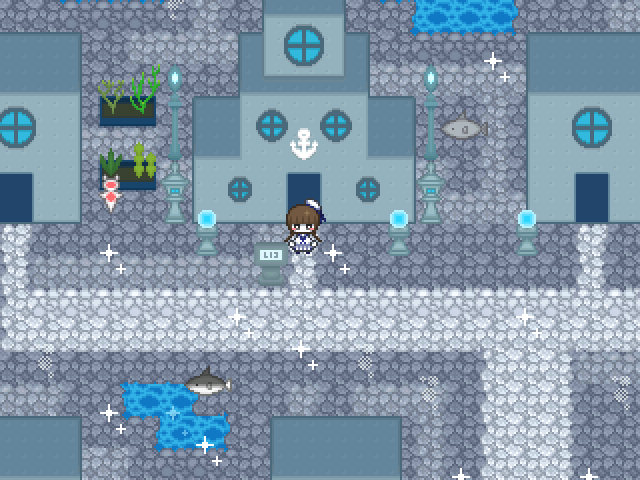
So, Wadanohara! Wadanohara and the Deep Blue Sea is the most well-known work of mogeko/Deep Sea Prisoner, released in 2013. The sea witch Wadanohara is traveling to her ocean home when she gets a warning to turn back. Suddenly, her home gets dragged into an ocean war, which soon takes a turn for the nightmarish.
It is primarily an adventure game that devolves more toward the RPG horror category. It also has combat, but it’s pretty much just window dressing – this tends to be a thing with a lot of RPG Maker games that don’t aim to be RPGs first and foremost.
Wadanohara and the creator was also the center of a whole bunch of discourse back then. Now yeah, part of it crosses into “depiction doesn’t equal endorsement.” But also, huh, pretty weird that sexual assault kept being a recurring element in these games with it being treated as dark comedy by the creatures that Deep Sea Prisoner used to name themself after in one of them. And also drawing the characters in Wadanohara depicted in the sexual assault outside the game in porn, drawing art with depictions of the rising sun, drawing the Yume Nikki characters in Nazi uniforms… You kinda can’t blame people for getting mad when there’s a pattern of being Weird outside of the games.
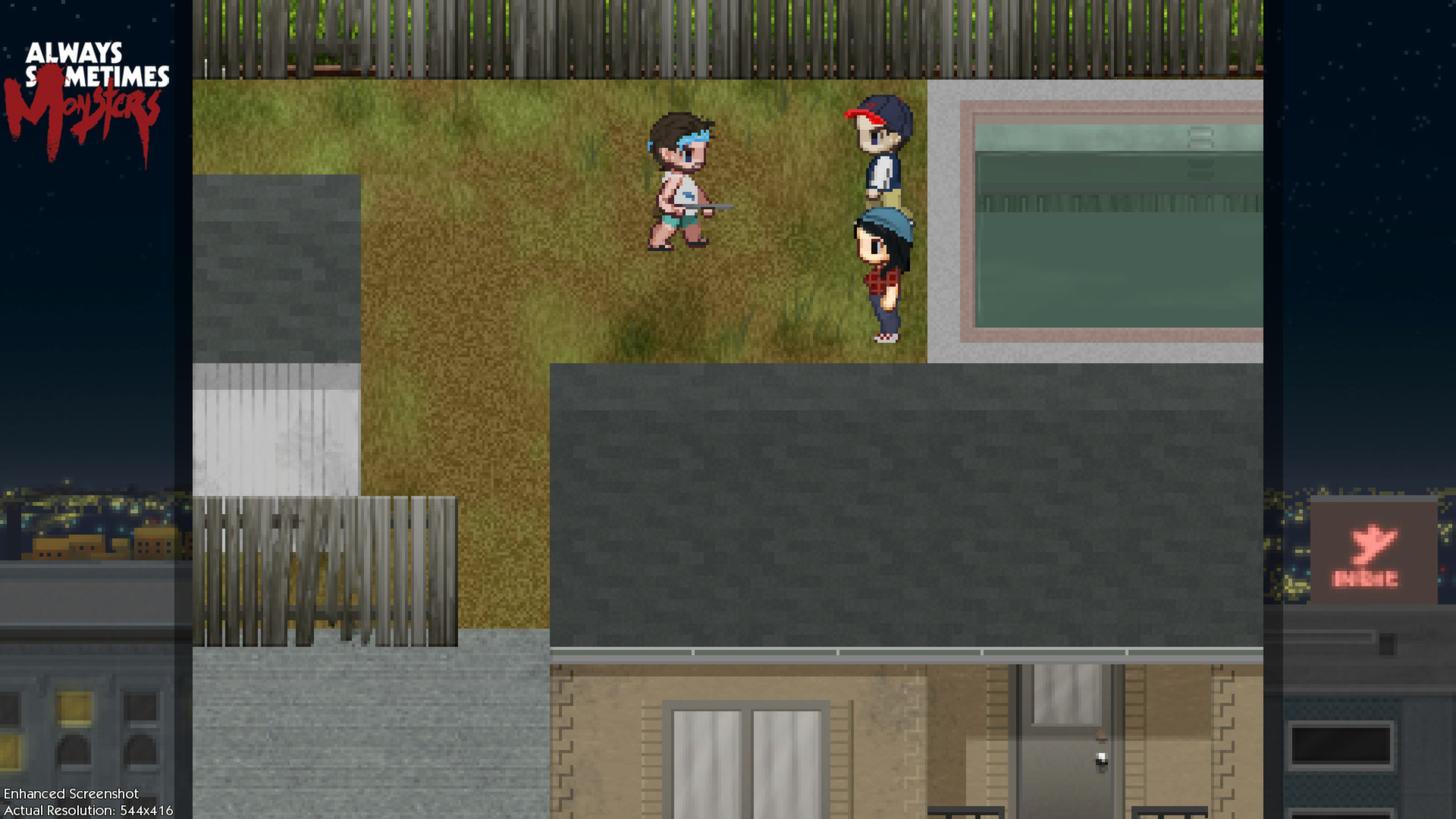
Always Sometimes Monsters is a game by Vagabond Dog that combines adventure and life sim elements. One year after meeting the love of your life and landing a book deal, everything’s fallen to pieces. However, you have the shot at making everything better by journeying across the country and engaging in constant moral choices to get ahead in life and pry yourself out of despair.
My only experience with Always Sometimes Monsters was watching somebody’s video series on it… Which has been extremely soured since he turned out to be a sexual predator. Well. Anyway, in looking back on this game, it’s only now that I’ve found out that a sequel, Sometimes Always Monsters, was released in 2020, which seems to be a direct sequel from the ideal ending of this one.
Out of Vagabond Dog’s catalog, the Monsters series seems to be the stuff with the most reception. Well, besides a meme game riffing on the whole “Karens” thing, which I’m just kinda cynical about.
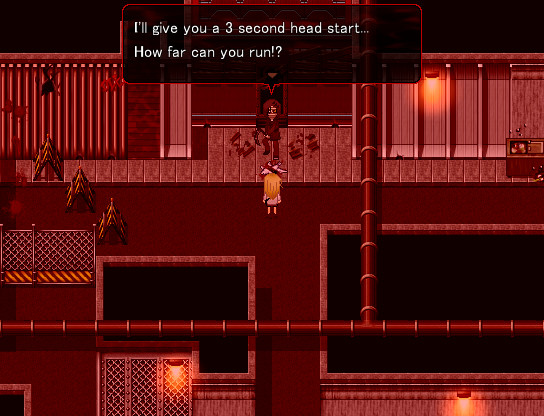
Angels of Death started out as an episodic freeware series by KRNKRN and distributed by Den-Fami Nico Game Magazine, which was later translated and compiled into a Steam release in 2016. It’s a psychological horror adventure about a pair of strangers that find themselves trapped in some facility. One is a young girl that wants to die and the other is a guy that’s an experienced killer, who promises to grant her wish of dying when they escape. Normal!
In Japan, Angels of Death had a bigger presence, with a manga adaptation that apparently ended serialization last year and an anime adaptation by J.C. Staff. I looked up reviews of the anime and impressions are extremely mixed. I think it’s funny that most of them say that the anime feels really video gamey; it really must be a 1-to-1 adaptation. The DVDs for the anime also came with a prequel chapter, Episode.Eddie, as a little bonus, though it’s available as separate DLC for the Steam release.

Noel: The Mortal Fate, by Kanawo, is in a similar boat as Angels of Death, being a commercial compilation of a freeware series – in fact, they share a bundle together. In this episodic series, a girl named Noel makes a pact with the demon Caron to kill Burrows, the mayor of LaPlace, for unknown reasons.
While the main game on Steam is seven chapters, there are also two DLC episodes starring different characters dealing with the aftermath of the main series… and actually, that’s just the stuff translated. As it turns out, Noel: The Mortal Fate is still an ongoing series, with an 11th episode having been released in 2020. So, uh, you’re going to have to do some extra hunting if you want to enjoy the series to the fullest – ands even then, it may not even be done yet.
Noel also has a manga series, though it has a much smaller presence compared to Angels of Death. In fact, I had to dig a bit to even know there was seven volumes because it’s barely covered at all on stuff like MyAnimeList.
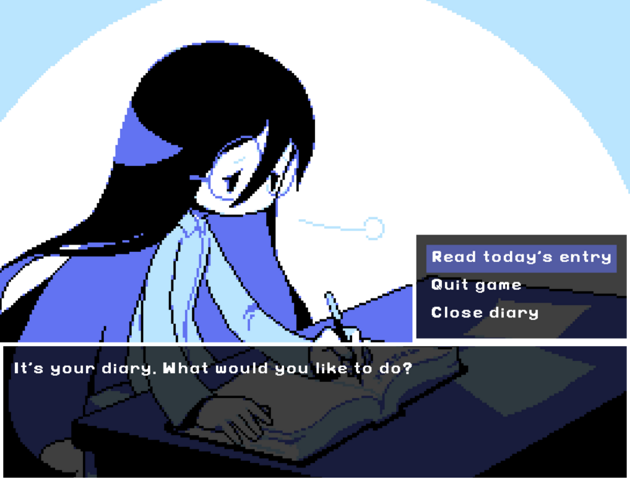
And to end things off, we have something that might be familiar: Escaped Chasm, by temmie. Yes, temmie as in the temmies of Undertale who are based on Temmie Chang, the major contributing artist to Undertale. A reclusive girl finds herself seeing into an alternate world in her dreams, which ends up being more real than she thought.
It’s a short, simple game, but as her first project, a short game like this is the lived experience of anyone heading into RPG Maker for the first time. Honestly, aiming for something short and sweet is good if you’re making your first game.
4th Layer

On this layer, I think you’ll only really know these games if you’re into RPG Maker stuff already or through word of mouth. Any Youtube coverage of this stuff will probably be by really small Youtubers. …Also, I bizarrely played half of these.

But man! Housekeeping’s Jimmy and the Pulsating Mass doesn’t deserve to be all the way down here! In my opinion, it really should stand on the same pedestal as LISA the Painful and OMORI because it’s pretty damn good.
Jimmy and the Pulsating Mass feels like an amalgamation of everything RPG Maker. It embodies the RPG Maker games with well-realized combat inspired by multiple RPGs, it’s got a bunch of areas that mimic the sensibilities of horror RPGs, and it has a sentimental story that can rival some of the ones higher on this list. Most of the stuff surrounding Lars kinda sucks, but for the most part, pretty good game! Seriously, don’t sleep on it.
Beyond that, Housekeeping has had a good presence on RPGmaker.net. He is also notably the creator of The God of Crawling Eyes, an RPG horror game that arguably has a bigger reputation than Jimmy.

Helen’s Mysterious Castle is made by Satsu. A silent girl lives inside a mysterious floating castle that houses a whole bunch of weirdos, and one day, she decides to leave, I guess.
Honestly, I played it a long time ago and I did not care for the story at all. However, its biggest quality is easily its battle system. Fights are exclusively one-on-one duels, where moves act on a wait time. You attack with the weapon when the timer runs down and defend with it while waiting, and the same is true for the opponent. Effectively playing this game means strategic use of picking when to use which weapons and learning the enemy’s moveset to get ahead.
Initially, I thought this was the only game developed by Satsu, but I found out through a tweet by (looks at notes) @highimpactsex that they made other games which are currently Japanese only. To me, this is a sign that we’re heading into the depths.

And I’ve also surprisingly played Ara Fell. Vampires terrorize the floating lands of Ara Fell, which was once protected by a race of elves who turned themselves to stone to save themselves from annihilation and to starve out the vampires. Years later, a young girl named Lita winds up finding a ring that drags her into a battle to save Ara Fell, which is still very much being terrorized by vampires.
For the most part, Ara Fell may be the most straightforward RPG on this list (at least on the upper tiers). It’s some decent RPG Maker 2003 stuff evocative of old RPGs and while I had a few hiccups with the game, I personally think that it’s Okay overall.
Ara Fell actually has a really interesting development history that makes OMORI’s look like a bump in the road. Ara Fell was originally conceived in 2005 and was to be a bit of an episodic experience. However, that fell through because ambitions exceeded developer skill and the original version of Ara Fell seemed to be lost to the aether. Years later, the creator attempted to revisit the game in RPG Maker XP, though that also eventually fell through because the project’s ambition was too much.
But then in 2015, RPG Maker 2003 got the official English release through Steam, encouraging the creator to take another look at that original game. And so, after a long road, Ara Fell eventually released in 2016, and today, you can even play its “Enhanced Edition” on consoles. Truly, an RPG Maker game living the dream.
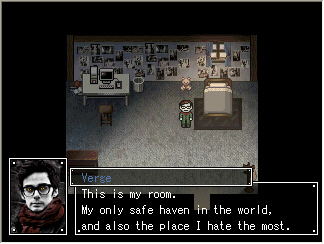
Beautiful Escape: Dungeoneer, by calunio, is an unusual entry and may be the darkest thing on this part of the list so far, if not entirely. You are a member of the dungeoneer community – a community of people that kidnaps and tortures people for entertainment and record and share videos of it for clout. The gold standard of this content are “beautiful escapes,” where victims manage to escape from their situations but leave wishing that they died.
Surprisingly made in a mere two weeks, Beautiful Escape is a mix of dating sim and puzzle game where you lure in victims to torture. This is absolutely not a game for everyone.
You may wonder: why am I mad about Kio’s Adventure when this game exists? To me, it’s a question of intent. Kio’s Adventure is literal torture porn, while Beautiful Escape is a torture game that makes you question things, like, how far are you willing to go for clout, is being an empty person with an empty life a good justification for what you do and you know, do you enjoy hurting other people?
In fact, calunio has another game, THERAPIST: Mind Manager that tries to explore gray ideas through being a therapist that has to help a known sex offender – unlike Beautiful Escape, I think that’s a moral and ethical dilemma that’s closer to Earth. Like hey, I believe in prison abolition, but I find myself in a rut thinking of how this applies to genuinely horrible people. Honestly, if you’re into what Beautiful Escape presents but can’t stomach the specific way it explores its ideas, maybe THERAPIST will be a more palatable time.
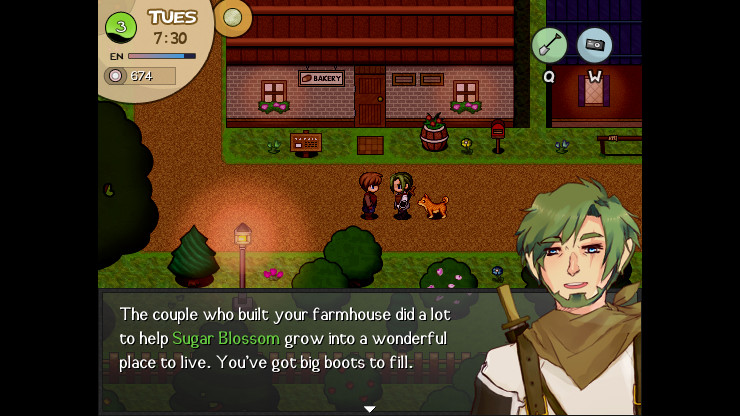
And in another divergence from the norm, we end with Wayward Prophet’s World’s Dawn. World’s Dawn is a life sim game made in the vein of Harvest Moon. Farming, interacting with villagers, you know, the works.
From what I can tell, it’s a perfectly alright game. It just seems like it had the misfortune of Stardew Valley releasing a literal month later. Not to put the games against each other, but I honestly do feel bummed for this game because in the eyes of people looking for another Harvest Moon experience, this just seems completely overshadowed.
Though, from what I can tell, this doesn’t seem to be a bother at all. In fact, Wayward Prophet’s been trucking on with A Story Beside, a narrative RPG Maker game in Early Access that’s also holding the torch of episodic RPG Maker games. The sixth chapter of the game released in August and the full thing is due to be done any time now.
Working on this iceberg has been a fun trip, in that besides exposing me to new games, it’s also exposed me to new things about games I already know. And I really hope that I’ve done the same for you, the readers.
Almost the entirety of the second half of the list is unknown to me, so we’ll be learning about things together.

[…] further ado, let’s get on with it. Check out the first half of this if you haven’t already, I […]
LikeLike
[…] should also probably read the first and second parts, if you haven’t […]
LikeLike
Belo trabalho com a lista, camarada. O que me surpreendeu foi a posição de Jimmy, pois eu não fazia ideia que o jogo é considerado tão obscuro.
LikeLike
Poof’s Killergarten should appear at the bottom part
LikeLike